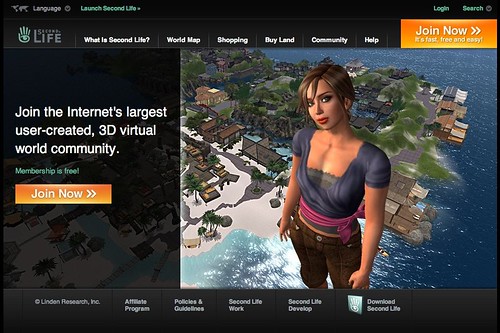cc image courtesy flickr.com/photos/30946745@N06
This long weekend could not have been more timely. I needed a refresh and while Saturday was framed by 6am and 6pm Grace O'clocks, I've had the luxury of time to explore artists markets, movies, research papers and books. Now it's Monday and I need to turn my attention to Three Thanks - right after I get this post out of my head.
 One book I finished was Simon Sinek's "Start With Why". I ran across Simon's TED Talk "How Great Leaders Inspire Action" (also the subtitle to his book) and was left wanting more, so I grabbed a copy of his book.
One book I finished was Simon Sinek's "Start With Why". I ran across Simon's TED Talk "How Great Leaders Inspire Action" (also the subtitle to his book) and was left wanting more, so I grabbed a copy of his book. Unless you are seriously into marketing texts, I think Simon's TED talk is just enough to get the main point across which is an elegant idea that Simon calls his "discovery". Simon embodies his discovery in what he calls the The Golden Circle. It's a simple concentric circle model with WHY at the center, surrounded by HOW and WHAT.
He describes the implications as this:
He describes the implications as this:
Every single person, every single organization on the planet knows WHAT they do, 100 percent. Some know HOW they do it, whether you call it your differentiated value proposition or your proprietary process or your USP. But very, very few people or organizations know WHY they do what they do. And by "WHY" I don't mean "to make a profit." That's a result. It's always a result. By "WHY" I mean: what's your purpose? What's your cause? What's your belief? Why does your organization exist? Why do you get out of bed in the morning? And why should anyone care?
Simon predominantly uses three case studies to demonstrate how the idea of WHY is a differentiator for success: 1) why Apple has become a predominant technology company, 2) why the Wright brothers succeeded despite lack of funds, and 3) why Martin Luther King inspired the nation not with what should be done, but with the why of his beliefs.
He argues that organizations that begin with a strong sense of WHY and keep themselves centered there are far more effective that those that focus on WHAT they do or HOW they do it.
He argues that organizations that begin with a strong sense of WHY and keep themselves centered there are far more effective that those that focus on WHAT they do or HOW they do it.
WHY is the motivator
Simon explains that WHY is also the great motivator - people decide to buy the WHY of what a company does or provides, not the WHAT or HOW. This intrinsic motivation is based on biology - not psychology.
If you look at a cross-section of the human brain, looking from the top down, What you see is the human brain is actually broken into three major components that correlate perfectly with the golden circle. Our newest brain, our homo sapien brain, our neocortex, corresponds with the "what" level. The neocortex is responsible for all of our rational and analytical thought and language. The middle two sections make up our limbic brains. And our limbic brains are responsible for all of our feelings, like trust and loyalty. It's also responsible for all human behavior, all decision-making, and it has no capacity for language....This is what powers our decisions that just "feels right". That feeling is the limbic brain, the part without the capacity for language but the part that controls decision-making. It's also the part that helps us grok a situation faster that we can process it rationally. Our brains store relationship patterns that provide the first layer of defense when we are presented with a new experience that help up interpret and react. These are patterns of why, not how or what.
The Second Life WHYs
These stories about Apple and the Wright Brothers got me thinking that one of the stumbling blocks to adoption for virtual worlds like Second Life ® might be the focus on the what and how and not enough on the why(s).
Think about the last time you wanted to tell someone, anyone, about Second Life. How did you start the conversation? Did you start with the whats? Second Life is a virtual world where .... How long was it before you got tangled up in what and how details with the person staring back at you quizzically? I've done this more times than I can count and I always get stuck on the whats but when I talk about the WHYs I get a completely different, more interested, response.
The beauty of Second Life is that the whys for Residents are wide and varied and the Resident-told why stories are compelling and powerfully persuasive. They are not all the same, nor are they "right" or "wrong"- which is why they are each significant to growth. These are not answers, they are experiences that we somehow shape into words, images, art, film, or spaces. The fact that people tell their Second Life why stories is a part of the culture that we shouldn't ignore.
Our why stories might help Second Life cross the chasm - remember those pesky early adopters? They came for the why, but now they revel in the what and how. This is why early adopters aren't good ambassadors, they have taken the why for granted by now, but the second wave of new residents are still looking for the whys. When barraged by whats and hows, people are not motivated - they can't decide - they won't decide - to try Second Life. But personal why stories tap the patterns in our brains, they resonate with us even if they take place in some funky technology thing called a virtual world where you can make real money, you can be anything you want, and you can even fly.
The beauty of Second Life is that the whys for Residents are wide and varied and the Resident-told why stories are compelling and powerfully persuasive. They are not all the same, nor are they "right" or "wrong"- which is why they are each significant to growth. These are not answers, they are experiences that we somehow shape into words, images, art, film, or spaces. The fact that people tell their Second Life why stories is a part of the culture that we shouldn't ignore.
Our why stories might help Second Life cross the chasm - remember those pesky early adopters? They came for the why, but now they revel in the what and how. This is why early adopters aren't good ambassadors, they have taken the why for granted by now, but the second wave of new residents are still looking for the whys. When barraged by whats and hows, people are not motivated - they can't decide - they won't decide - to try Second Life. But personal why stories tap the patterns in our brains, they resonate with us even if they take place in some funky technology thing called a virtual world where you can make real money, you can be anything you want, and you can even fly.
Have a look at the Second Life landing page and the message. "Join the Internet's largest user-created, 3D virtual world community". That's a classic marketing call to action, but it's not exactly making my limbic brain dance.
What "why" is that Gulliver's Travel-esque image attempting to portray? And notice the first position link is "What is Second Life?"
What would a "Why Second Life?" call to action look like? Do we even know anymore?
What about the why of Linden Lab? Do you think of them, as Tom Hale describes, "a software company", or do you think of them as an organization that set out to "advance the human condition"? One is a so what, the other is a tell me more.
Maybe we need to tell more Second Life why stories, and maybe the Lab needs to find their why again.
Share Some Grace:

